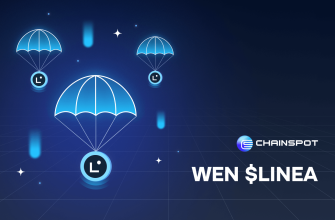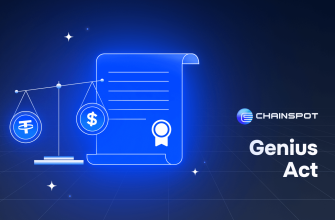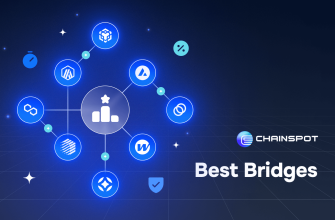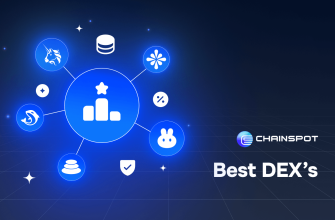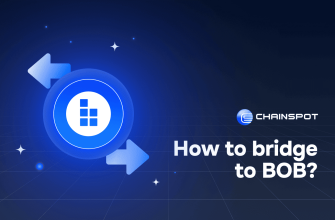- The Challenge of Blockchain Silos
- Breaking Down Barriers: Cross-Chain Solutions
- How Cross-Chain Protocols Work
- The Importance of Cross-Chain Technology in DeFi
- Key Use Cases for Cross-Chain Protocols
- Different Approaches to Cross-Chain Solutions
- Chainspot: Simplifying Cross-Chain Transactions
- The Future of Blockchain Connectivity
With the continuous growth of blockchain technology, more networks are emerging, each designed with distinct features and benefits. However, one critical challenge remains: how can these blockchains communicate and share resources in a decentralized environment? This issue is becoming increasingly pressing as the DeFi (decentralized finance) space expands across various ecosystems. Enter cross-chain solutions—innovations that allow blockchains to connect, exchange assets, and collaborate efficiently.
In this article, we’ll explore how cross-chain protocols enable seamless interactions between blockchains and how they are revolutionizing the DeFi landscape.
The Challenge of Blockchain Silos
Every blockchain operates as its own independent ecosystem, with assets and data confined within its network. Ethereum, for instance, has a robust DeFi ecosystem but struggles with scalability and transaction costs. Meanwhile, other chains like Binance Smart Chain or Solana offer speed and lower fees but lack Ethereum’s network effect. These differences create silos where users are often restricted to the features of their chosen chain.
This fragmentation limits what can be achieved in DeFi. Users who want to move assets between chains face high fees and complex processes, hindering the full potential of decentralized finance. The lack of interoperability across networks is a bottleneck for scalability and innovation in the blockchain space.
Breaking Down Barriers: Cross-Chain Solutions
Cross-chain solutions solve the problem of blockchain isolation by providing tools to transfer assets and data across different networks. At their core, cross-chain protocols enable interaction between blockchains, allowing tokens, information, and liquidity to flow between previously isolated ecosystems.
This connectivity opens up new opportunities for users and developers, removing the limitations imposed by any single blockchain. With cross-chain technology, users can benefit from the strengths of multiple networks, and developers can create applications that leverage the unique features of different chains.
Ready to experience seamless swaps across multiple blockchains? Click here to start swapping your tokens with ease!
How Cross-Chain Protocols Work
Cross-chain protocols operate by securely facilitating the transfer of assets or information between networks. The methods used for this vary, but the most common approaches include:
- Token Locking and Issuance: Assets on the source blockchain are locked, while an equivalent amount is minted or issued on the destination chain.
- Burning and Minting: On the original chain, tokens are burned, and corresponding tokens are created on the target network.
- Conditional Transfers: Some systems temporarily lock tokens on one blockchain until specific conditions are met, allowing them to be released on another network.
The main challenge with cross-chain protocols is ensuring security and efficiency. Each blockchain has its own consensus mechanisms and protocols, so ensuring that transfers between them are both secure and efficient is key to the success of these systems.
Discover how easy it is to bridge assets between different chains by trying our cross-chain bridge!
The Importance of Cross-Chain Technology in DeFi
Without cross-chain technology, decentralized finance remains fragmented. By enabling communication and interaction between blockchains, cross-chain protocols unlock the potential for more scalable and liquid DeFi ecosystems. Here’s how they enhance the DeFi landscape:
- Increased Liquidity: Cross-chain protocols allow assets to flow freely between networks, giving users access to deeper liquidity across multiple ecosystems.
- Enhanced User Flexibility: Users can benefit from the features of different blockchains without needing to move their assets manually or deal with the high fees and slow processes involved in cross-chain transfers.
- DeFi Ecosystem Growth: As cross-chain solutions become more robust, DeFi applications can expand their scope, integrating multiple blockchains to offer more diverse and efficient services.
Access liquidity across various DeFi networks effortlessly—start bridging and swapping today!
Key Use Cases for Cross-Chain Protocols
Cross-chain protocols open up new possibilities for both retail and institutional users in the DeFi space:
- Global Liquidity Pools: Users can tap into liquidity across various networks, optimizing trades, swaps, and other DeFi activities. By aggregating liquidity from different blockchains, cross-chain solutions make it easier for users to access the best prices and yields.
- Decentralized Applications (dApps): Developers can create dApps that operate on multiple blockchains, leveraging the speed of one chain and the security of another. This flexibility drives innovation and allows for more advanced and user-friendly applications.
- Cross-Network Yield Farming: With the ability to transfer assets seamlessly, users can participate in yield farming or staking opportunities across different chains, maximizing their returns by accessing the best protocols on each blockchain.
Different Approaches to Cross-Chain Solutions
The development of cross-chain technology has given rise to several distinct models, each with its own advantages:
- Liquidity Aggregation: Platforms aggregate liquidity from multiple sources and blockchains, ensuring users get the best deals when exchanging assets. This method simplifies the user experience while providing access to a broader range of liquidity pools.
- Validator-Based Solutions: Some cross-chain protocols rely on a network of validators to ensure the security and accuracy of transactions between blockchains. These validators act as trusted entities that confirm the correctness of transfers.
- Cross-Chain Smart Contracts: Smart contracts that function across multiple chains can execute more complex tasks, such as managing assets or enabling interactions between dApps on different blockchains.
Take advantage of cross-chain smart contracts—start interacting with multiple blockchains now!
Chainspot: Simplifying Cross-Chain Transactions
For users looking to leverage cross-chain technology, Chainspot offers a powerful and intuitive solution. Chainspot is a gamified omnichain superDapp that aggregates liquidity and yield providers across EVM and non-EVM chains. By integrating platforms like Symbiosis, Li.Fi, 1inch, and Odos, Chainspot ensures that users always get the most efficient route for asset exchanges, using a smart routing engine to deliver the best results.
Through Chainspot, users can access liquidity across multiple networks, optimizing their DeFi experience in a secure and decentralized manner. The platform simplifies the complexities of cross-chain transfers, making it easier for users to participate in DeFi activities across chains without hassle.
Start your cross-chain journey—swap and bridge assets with Chainspot now!
The Future of Blockchain Connectivity
As cross-chain technology continues to evolve, the blockchain ecosystem is poised to become more interconnected than ever before. Seamless asset transfers between chains will become the norm, opening up new opportunities for collaboration, innovation, and growth in decentralized finance. Cross-chain protocols will be at the heart of this transformation, driving the next phase of blockchain’s evolution by removing barriers and expanding possibilities.
For users and developers alike, cross-chain solutions represent a critical step towards a more scalable, flexible, and inclusive decentralized future.






